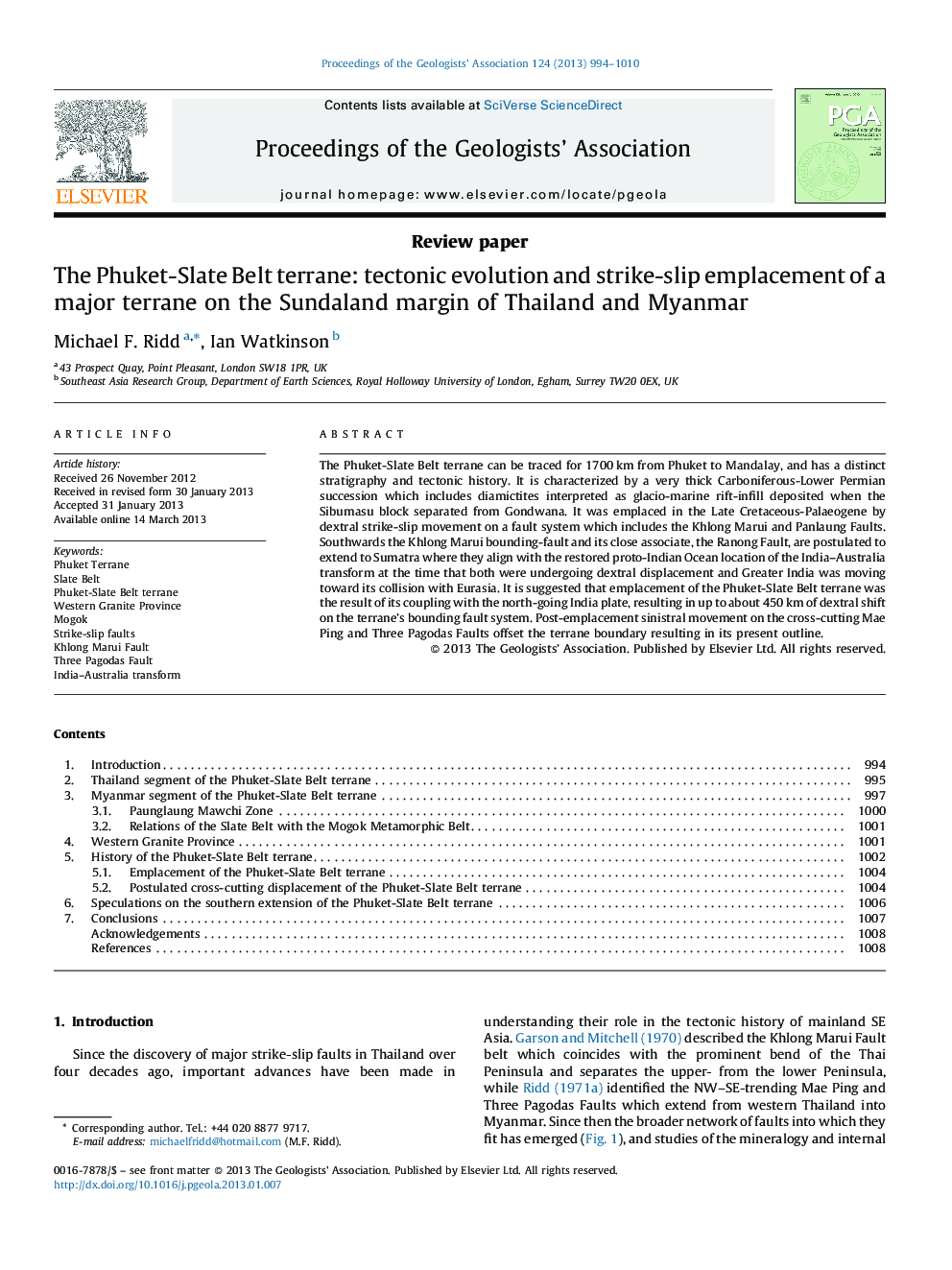| Article ID | Journal | Published Year | Pages | File Type |
|---|---|---|---|---|
| 4734687 | Proceedings of the Geologists' Association | 2013 | 17 Pages |
The Phuket-Slate Belt terrane can be traced for 1700 km from Phuket to Mandalay, and has a distinct stratigraphy and tectonic history. It is characterized by a very thick Carboniferous-Lower Permian succession which includes diamictites interpreted as glacio-marine rift-infill deposited when the Sibumasu block separated from Gondwana. It was emplaced in the Late Cretaceous-Palaeogene by dextral strike-slip movement on a fault system which includes the Khlong Marui and Panlaung Faults. Southwards the Khlong Marui bounding-fault and its close associate, the Ranong Fault, are postulated to extend to Sumatra where they align with the restored proto-Indian Ocean location of the India–Australia transform at the time that both were undergoing dextral displacement and Greater India was moving toward its collision with Eurasia. It is suggested that emplacement of the Phuket-Slate Belt terrane was the result of its coupling with the north-going India plate, resulting in up to about 450 km of dextral shift on the terrane's bounding fault system. Post-emplacement sinistral movement on the cross-cutting Mae Ping and Three Pagodas Faults offset the terrane boundary resulting in its present outline.
